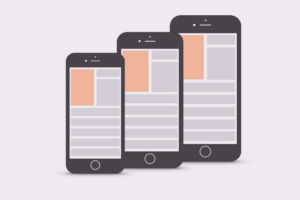AutoLayout in Swift is a powerful layout system used in iOS development to create flexible and adaptive user interfaces. It allows you to define the relationships and constraints between UI elements, ensuring that your app’s layout adjusts appropriately to various screen sizes and orientations. AutoLayout helps maintain a consistent and visually appealing design across different iOS devices.
What is AutoLayouts and components:
AutoLayout in Swift is a layout system used for designing responsive and adaptive user interfaces in iOS development. It relies on constraints, which define the relationships between UI elements. Constraints can be set programmatically using NSLayoutConstraint or visually through Interface Builder. Anchors provide a concise way to express constraints. Visual Format Language (VFL) offers a string-based syntax for constraints. Additionally, content hugging and compression resistance properties control how views respond to extra or limited space. AutoLayout is essential for creating consistent layouts across different devices and screen sizes.
Key components of AutoLayout include:
- Constraints: These are rules that define the layout of UI elements. Constraints specify the position, size, and alignment of views relative to each other.
- NSLayoutConstraint: Programmatically, constraints are created using the NSLayoutConstraint class. These objects describe the relationship between two views, such as their alignment, spacing, or size.
- Anchors: Introduced in later iOS versions, anchors provide a more readable and concise way to create constraints. They are properties of the UIView class that represent various layout attributes.
- Interface Builder: Developers can also set up AutoLayout constraints visually using Interface Builder in Xcode. This involves dragging and dropping to establish relationships between views.
- Visual Format Language (VFL): VFL is an expressive language for specifying AutoLayout constraints using strings. It provides a concise syntax for defining layout relationships.
- AutoLayout simplifies the process of creating adaptive and responsive layouts, making it easier to build iOS applications that look and perform well on a variety of devices.
Why we use Autolayouts?
- Adaptability: AutoLayout in Swift enables the creation of adaptive user interfaces that automatically adjust to different screen sizes and orientations.
- Consistency: It ensures a consistent layout across various iOS devices, maintaining a cohesive and visually pleasing design.
- Dynamic Content: AutoLayout accommodates dynamic content by defining relationships and constraints between UI elements, preventing overlapping or misalignment.
- Efficiency: Reduces the need for explicit frame calculations, making it easier to manage and maintain complex layouts.
- Ease of Use: Whether set programmatically or through Interface Builder, AutoLayout simplifies the process of building responsive layouts, improving development efficiency.
Advantages on AutoLayous :
- Responsive Design: AutoLayout in Swift enables the creation of responsive user interfaces that adapt seamlessly to different screen sizes, ensuring a consistent user experience across various iOS devices.
- Orientation Support: It simplifies handling device orientation changes, allowing UI elements to automatically reposition and resize based on defined constraints.
- Reduced Code Complexity: AutoLayout reduces the need for manual frame calculations, resulting in cleaner and more maintainable Swift code.
- Localization Support: Facilitates the localization of apps by accommodating varying content lengths and adapting layouts accordingly, supporting multiple languages without sacrificing design integrity.
- Efficient Debugging: AutoLayout provides helpful error messages, aiding developers in identifying and resolving layout issues more efficiently during the development process.
Conclusion: AutoLayout in Swift is an indispensable tool for iOS developers, offering a robust solution for creating adaptive and responsive user interfaces. Its ability to handle varying screen sizes, orientations, and dynamic content ensures a consistent and visually appealing experience. With a reduction in manual calculations, it streamlines the layout process, promoting cleaner code and efficient debugging. AutoLayout stands as a cornerstone for achieving design consistency and adaptability in iOS app development.

